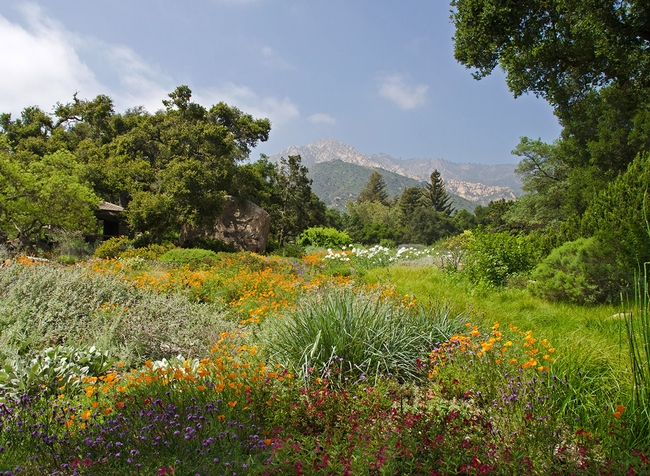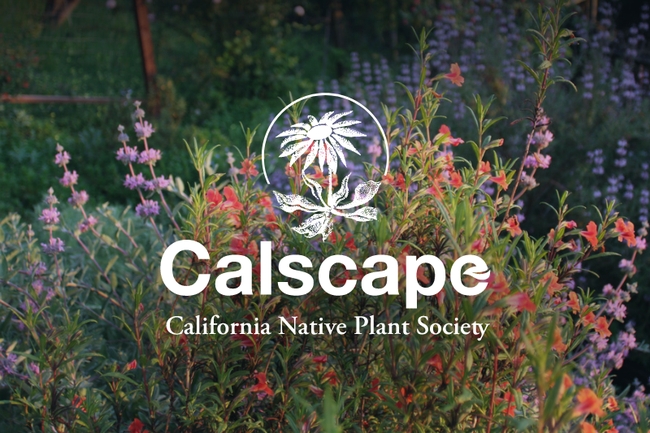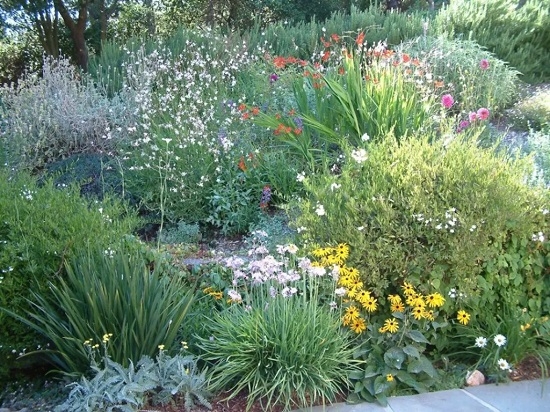There are lots of reasons to include native plants in your garden. But do you know when the native plant movement began in California and why the use of native plants is so important?
Theodore Payne (1872-1963) is generally considered the father of the native plant movement in California. Mr. Payne was born in England and arrived in New York on June 10, 1893. By July, he had made his way to Southern California where he spent the rest of his life promoting the virtues of California's native plants.
In 1903, Mr. Payne purchased a nursery in Los Angeles. The nursery sold a full range on flowers, trees, vegetables and seeds. By 1905, the Payne Nursery began to specialize in California wild flowers and native plants. A year later, the first catalog of seed offerings was published. Mr. Payne also published Payne's Garden Guide and other catalogs. He collected native plant seeds and introduced over 400 species for cultivation at his nursery.
During his life, Mr. Payne designed several gardens in Southern California using native plants. One of his early gardens, the California Wild Garden in Los Angeles, featured 262 species of California native trees, shrubs and wild flowers. Other gardens and landscape projects include Pomona College, Occidental College, Torrey Pines Park, the Santa Barbara Botanic Garden (shown in the figure below), Exposition Park in Los Angeles and Cal Tech in Pasadena.
In 1960, the Theodore Payne Foundation for Wild Flowers and Native Plants, Inc. was founded. Today known simply as the Theodore Payne Foundation, the non-profit organization continues the work of Mr. Payne through education and inspiration to use native plants. One of the resources the foundation developed is the California Native Plant Library. The library can be searched by botanical name, common name or family name. There are lists of plants by plant type, flower color and water needs. The entries for each plant include information about care and maintenance, and specific uses such as “attracts butterflies” as well as other information.
In Northern California, the push for native plants began in 1965 when a small group of gardeners, nature lovers and plant experts came together in Berkeley to save the Tilden Regional Park's Botanic Garden. The group went on to become the California Native Plant Society (CNPS). Today, there are 36 chapters across the state that advance the CNPS core programs, including conservation, education, gardening, publications, rare plant science and vegetation science.
As Mr. Payne did, CNPS has developed a list of native plants. The current list is an online database called Calscape. The database can be sorted by the common name of the plant, the botanical name of the plant or, for example, the number of butterflies supported by the plant. Filters that can be used to narrow your search include nursery availability, plant type, water and sun needs, special uses, ease of care, and seasonality.
The research done by these organizations confirms that the use of native plants in our gardens and landscapes is beneficial to our environment. These benefits include:
- California has over 6,000 native plant species, subspecies and varieties. Approximately one-third of these are only found in California.
- Once established, native plants use, on average, one-seventh of the water required by non-native plants.
- Native plants have fewer pest problems than non-native plants, reducing the need for pesticides.
- Native plants like the local soil, so soil amendments and fertilizers are not required. Also, native plants are grown where they are sold so they are not transported long distances.
- A garden designed for the mature-size of the plants can require little maintenance once established.
- Native plants have a diversity of colors, forms, textures, and aromas. With a bit of attention to design, you can have flowers year-round.
- Birds, hummingbirds, butterflies and pollinators use native plants for food and shelter.
- Only 10% of our herbivorous insects can eat non-native plants. Our insects provide 90% of the diet for baby birds and they play an important role in decomposition, pollination and pest management.
So try planting California natives. You won't be sorry. See this photo from the Marin Independent Journal for some inspiration:


